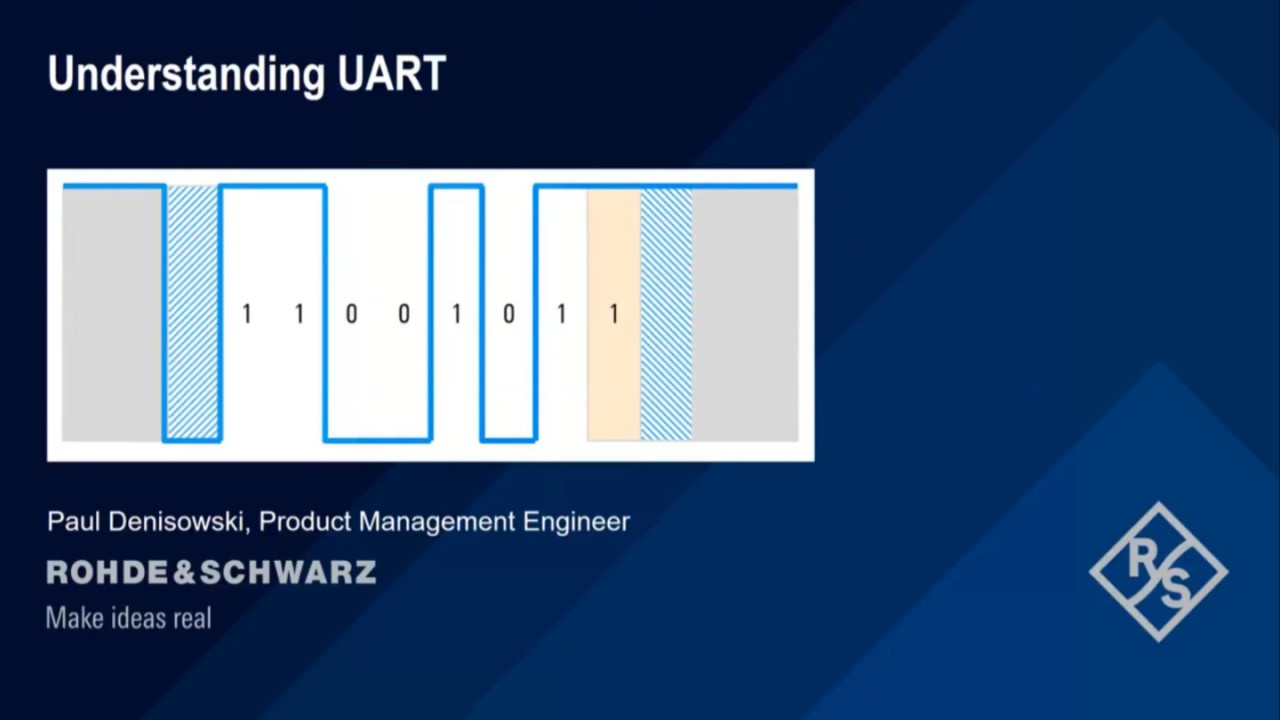As with most digital systems, a “high” voltage level is used to indicate a logical “1” and a “low” voltage level is used to indicate a logical “0”. Since the UART protocol doesn’t define specific voltages or voltage ranges for these levels, sometimes high is also called “mark” while low is called “space”. Note that in the idle state (where no data is being transmitted), the line is held high. This allows an easy detection of a damaged line or transmitter.
Start and stop bits
Because UART is asynchronous, the transmitter needs to signal that data bits are coming. This is accomplished by using the start bit. The start bit is a transition from the idle high state to a low state, and immediately followed by user data bits.
After the data bits are finished, the stop bit indicates the end of user data. The stop bit is either a transition back to the high or idle state or remaining at the high state for an additional bit time. A second (optional) stop bit can be configured, usually to give the receiver time to get ready for the next frame, but this is uncommon in practice.
Data bits
The data bits are the user data or “useful” bits and come immediately after the start bit. There can be 5 to 9 user data bits, although 7 or 8 bits is most common. These data bits are usually transmitted with the least significant bit first.
Example:
If we want to send the capital letter “S” in 7-bit ASCII, the bit sequence is 1 0 1 0 0 1 1. We first reverse the order of the bits to put them in least significant bit order, that is 1 1 0 0 1 0 1, before sending them out. After the last data bit is sent, the stop bit is used to end the frame and the line returns to the idle state.
- 7-bit ASCII ‘S’ (0x52) = 1 0 1 0 0 1 1
- LSB order = 1 1 0 0 1 0 1









